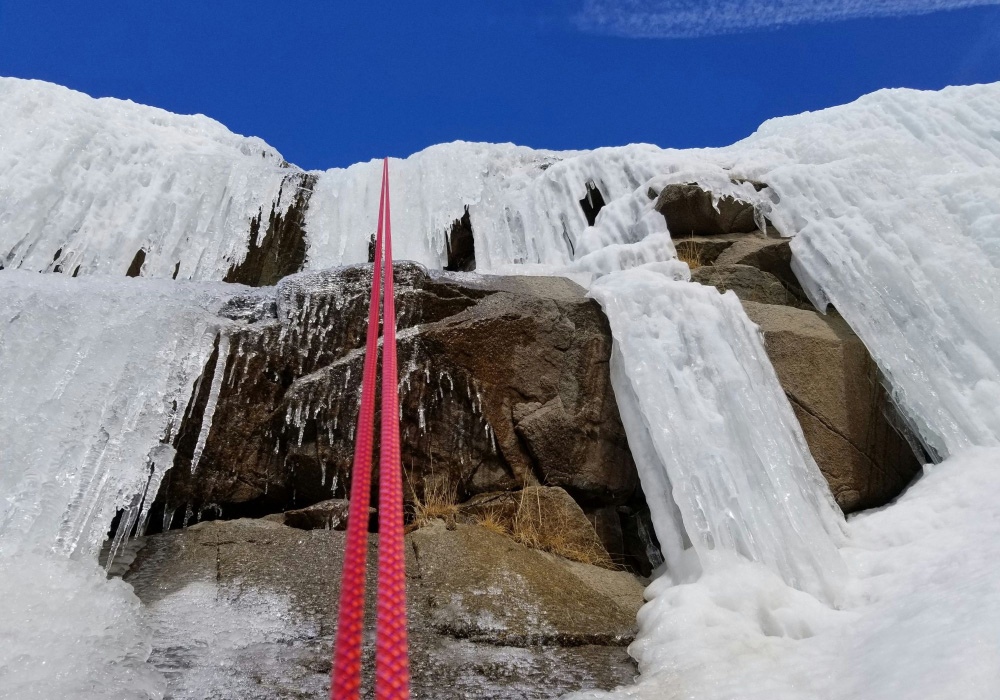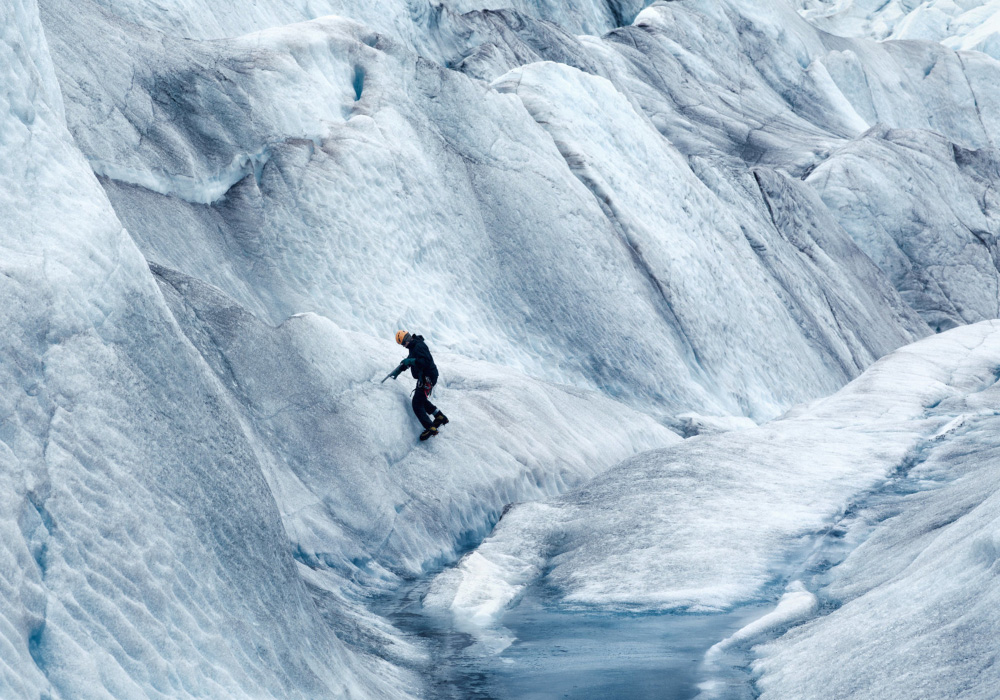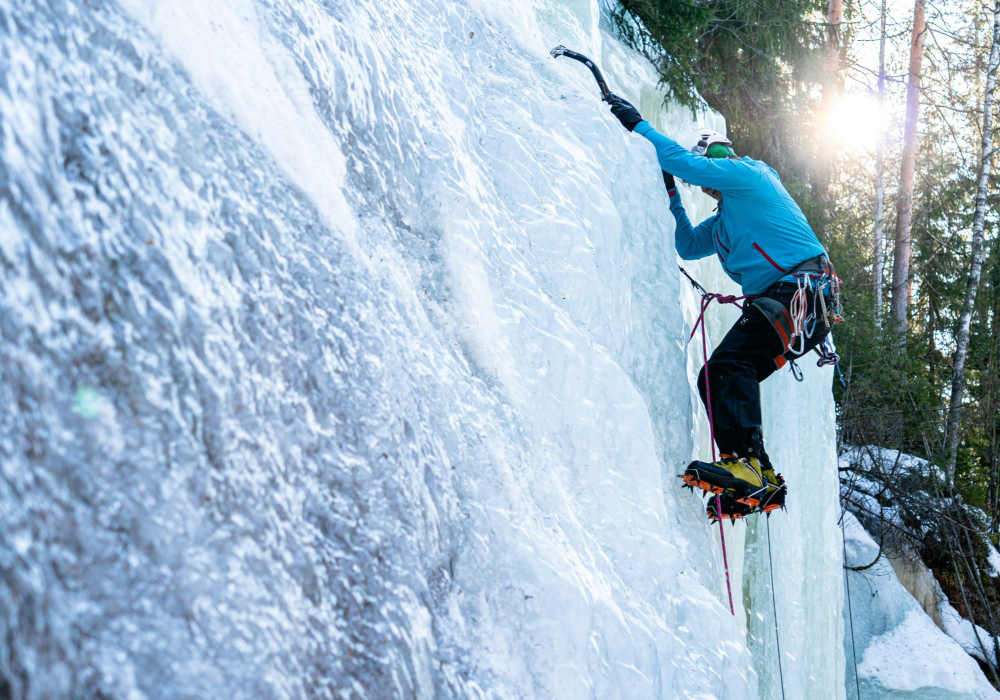Step into a world of frozen verticals and high-altitude thrills. Learn the essentials of ice climbing—from gear and safety to technique and top destinations—for a confident and rewarding ascent.
Ice climbing is a thrilling adventure that requires specific gear, techniques, and safety measures to ensure a successful and secure experience. Whether you're a beginner or looking to refine your skills, understanding the fundamentals will help you confidently embark on this icy journey.
Unlike traditional rock climbing, ice climbing presents unique challenges, including unpredictable ice conditions, extreme weather, and the need for specialized equipment. Mastering proper techniques and building physical endurance are crucial to safely navigating steep, frozen surfaces.
Additionally, preparation plays a key role in ensuring a rewarding climb, from selecting appropriate gear to evaluating climbing routes and ice stability. With the right knowledge, skills, and mindset, ice climbing offers an unparalleled sense of achievement and an opportunity to explore breathtaking, remote winter landscapes.
Why try ice climbing?
Ice climbing blends excitement, challenge, and stunning landscapes. Here’s why it’s worth considering:
- Adventure: Explore remote, breathtaking locations.
- Challenge: Develop physical and mental resilience.
- Community: Connect with like-minded climbers.
- Fitness: Engage in a full-body workout.
Every climb offers a sense of accomplishment, teaching new skills and boosting confidence while immersing you in serene winter landscapes.
Getting started: Essential skills
Before venturing onto the ice, mastering a few key skills will enhance safety and efficiency:
- Basic climbing techniques: Transitioning from rock to ice climbing improves adaptability.
- Foot placement: Proper crampon use ensures stability.
- Ice tool handling: Efficient use of ice axes conserves energy and improves safety.
- Belaying: Protects both you and your climbing partner.
- Ice reading: Assessing ice quality helps in choosing secure routes.
Taking a course or climbing with experienced partners significantly accelerates skill development and boosts confidence.
Necessary gear
Equipping yourself with the right gear is essential for both safety and performance. Here’s what you need:

Climbing Tools
| Tool | Purpose | Key Features |
|---|---|---|
| Ice axes | Provides grip and stability | Curved shafts for better performance |
| Crampons | Offers traction on ice | Steel construction with sharp points |
| Helmet | Protects against falling debris | Comfortable, snug fit |
| Harness | Secures the rope system | Adjustable leg loops |
Footwear essentials
| Footwear | Purpose | Key Features |
|---|---|---|
| Mountaineering boots | Insulation and support | Rigid sole, crampon-compatible |
| Gaiters | Keeps snow/ice out | Covers lower legs and boots |
| Insulated socks | Maintains warmth and dryness | Wool or synthetic materials |
Clothing for ice climbing
Proper layering is crucial to regulate body temperature and protect against harsh weather.
Layering techniques
| Layer | Function | Recommended Materials |
|---|---|---|
| Base layer | Wicks moisture | Merino wool, polyester |
| Mid layer | Provides insulation | Fleece, down |
| Outer layer | Shields from weather | Gore-Tex, hardshell fabrics |
Choosing high-quality materials ensures warmth, flexibility, and durability in extreme conditions.
Prioritizing safety
Safety is paramount in ice climbing. Follow these key precautions:
Risk assessment
| Risk Factor | Low Risk | High Risk |
|---|---|---|
| Weather | Clear skies | Stormy conditions |
| Ice quality | Blue, clear ice | Opaque, cracked ice |
| Terrain | Stable paths | Avalanche-prone slopes |
| Physical condition | Fit and rested | Fatigued or injured |
Emergency protocols
- Communication: Always climb with a partner and establish clear signals.
- Emergency kit: Carry first aid supplies, a whistle, and a multi-tool.
- Know your route: Familiarize yourself with escape paths and rescue procedures.
Best locations for ice climbing
For beginners, selecting the right location enhances safety and enjoyment.
 Ice climber on Mendenhall Glacier, Juneau, Alaska
Ice climber on Mendenhall Glacier, Juneau, Alaska
Top climbing destinations
| Location | Features | Best Time to Visit |
|---|---|---|
| Ouray Ice Park, USA | Man-made park, diverse routes | Dec - Mar |
| Banff National Park, Canada | Scenic, varied difficulty | Dec - Apr |
| Rjukan, Norway | 200+ frozen waterfalls | Jan - Mar |
| Chamonix, France | Accessible routes, stunning views | Dec - Feb |
Local vs. remote areas
| Factor | Local Areas | Remote Areas |
|---|---|---|
| Accessibility | High | Low |
| Cost | Low | High |
| Adventure | Moderate | High |
| Community | Variable | Strong |
Choose a location that aligns with your skill level and comfort zone.
Techniques to master
Refining technique improves efficiency and minimizes fatigue.
Basic climbing moves
| Move | Description |
|---|---|
| Front-pointing | Kicking crampons into the ice for stability |
| French technique | Using full crampon spikes for traction |
| High dagger | Swinging the ice axe above the head for height gain |
| Low dagger | Planting the axe closer for balance and rest |
Belaying essentials
| Aspect | Description |
|---|---|
| Belay devices | Manage rope tension (e.g., ATC, Grigri) |
| Anchor points | Secure attachment using ice screws or natural features |
| Communication | Clear commands like "On belay" and "Climbing" |
| Rope management | Avoid tangles and manage slack efficiently |
Training tips
Physical conditioning
- Strength training: Focus on the upper body, core, and legs (pull-ups, squats).
- Endurance: Improve stamina with cardio (running, swimming).
- Flexibility: Include dynamic and static stretching.
Mental preparation
- Visualization: Imagine successful climbs to build confidence.
- Mindfulness: Practice breathing techniques to stay calm.
- Goal setting: Establish achievable milestones for progression.
Finding a climbing community
Connecting with other climbers accelerates learning and enhances the experience.
Climbing clubs
| Club | Location | Website |
|---|---|---|
| American Alpine Club | USA | americanalpineclub.org |
| Alpine Club of Canada | Canada | alpineclubofcanada.ca |
| British Mountaineering Council | UK | thebmc.co.uk |
Online resources
| Resource | Type | Website |
|---|---|---|
| Mountain Project | Forum | mountainproject.com |
| Reddit Climbing | Forum | reddit.com/r/climbing |
| Rock and Ice | Magazine | rockandice.com |
Ice climbing is an exhilarating yet demanding sport that requires thorough preparation, proper gear, and adherence to safety protocols. Equipping yourself with essentials like ice axes, crampons, helmets, and appropriate clothing enhances both performance and security.
Mastering basic climbing techniques, belaying, and ice assessment ensures a confident and efficient ascent. At the same time, training for strength, endurance, and mental resilience prepares you for the sport's physical and psychological demands. Choosing beginner-friendly locations and finding a supportive climbing community further enriches the experience.
With the right approach, beginners can embark on their ice-climbing journey safely and progressively. Starting with easy routes, taking courses, and climbing with experienced partners builds foundational skills and confidence. Always prioritize safety, check gear before each climb, and stay informed about weather conditions and ice quality.
By embracing a steady learning curve and practicing regularly, you can develop expertise and fully enjoy the adventure of ice climbing. Happy climbing!



Comments powered by CComment